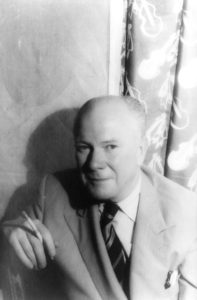A new “Futures” exhibit at the Smithsonian Institution in Washington, D.C. asks visitors “[w]hen there might be a single global government” while another question wonders whether “shared world government” can “unite different people most effectively.” It’s not the first time the taxpayer-supported entity billed as “America’s Museum” has promoted one-world government under the guise of futurism.
Propaganda on the Potomac:
 “The global government question appears on a screen inside the exhibit that allows visitors to wave their hands in front of a camera to select an answer to the questions that show up.” Just The News reported Nov. 25. ‘When might there be a single global government?’ reads the question. According to the report, “The answers that someone can choose from include time frames ranging from 10 years to 100 years or never.” Visitors can also answer the question, “Which of these might unite different people most effectively?” Possible answers are shared world government, virtual reality travel, a universal language, an alien invasion or none of the above.
“The global government question appears on a screen inside the exhibit that allows visitors to wave their hands in front of a camera to select an answer to the questions that show up.” Just The News reported Nov. 25. ‘When might there be a single global government?’ reads the question. According to the report, “The answers that someone can choose from include time frames ranging from 10 years to 100 years or never.” Visitors can also answer the question, “Which of these might unite different people most effectively?” Possible answers are shared world government, virtual reality travel, a universal language, an alien invasion or none of the above.
The Smithsonian seems to particularly enjoy using a futurism format to promote globalist government. In April 2013, it went out of its way to publicize a little-remembered 20th Century American journalist’s 1950 prediction that one-world government was the inevitable next phase for humanity. From illustrator Fred Siebel and writer Vincent Sheean, featured in the January, 1950 issue of Redbook magazine:
“A bright rainbow hangs in the sky, descending just over the horizon. The many people of Earth march slowly toward it, leaving behind the crumbling fist of war, oppression and international borders. Nothing less than the future is over that horizon; a future that is defined by a new world order where people are able to attain true happiness and leave behind the bleak conflicts of the early 20th century.
The article, tagged “History,” includes the following quote from Sheean’s long-forgotten piece:
“Whatever shape your world may take in the year 2000 A.D., we can all be fairly sure that it will be one world. Whether through war or through peace, the nations fifty years from now will have learned to enmesh their sovereignties into a single supreme authority. They will have learned to do so because, difficult as it may seem now, no other alternative exists. One world or none at all is the choice.”
Sheean accurately foresaw the coming of cell phones, and correctly envisioned them as a useful tool in the homogenization of the human race. He also prophesized that sickness and disease would be eradicated, but he seems to have been way off. The coronavirus has taught us that fear of disease is a potent tool for one-worldism, as opposed to the actual eradication of such worry serving that goal.
So who was Vincent Sheean, and why did the Smithsonian feel the need to give a modern platform to his obscure pining for one-world government by 2000?
Duranty’s Pal Wanted to Believe in Stalin

Vincent Sheean
(Photo by Carl Van Vechten Collection/Getty Images)
Sheean was an international journalist of some renown, back when the likes of Edward Murrow and Dorothy Thompson became major celebrities for engaging in that body of work. Like far too many liberal intellectuals of his day, Sheean became acutely infected with the communism bug. If not an out-and-out Marxist, he has been described as a notorious fellow-traveler whose journalistic heyday, the 1930s, coincided with the decade that saw Red Fever engross America’s cosmopolitan intelligentsia.
Historian Eugene Lyons, a former Communist sympathizer himself, writes that Sheean not only affixed his name to an infamous pro-Soviet manifesto written around the time of the Hitler-Stalin Pact in 1939 but actively helped round up the 400 leading liberal intellectuals who signed along with him in his role as a member of the Initiating Committee for the manifesto. “Reactionaries… have encouraged the fantastic falsehood… that the fascist states and Soviet Russia equally menace the democratic way of life. Soviet and fascist policies are diametrically opposed. The Soviet Union continues as always to be a bulwark against war and aggression, and works unceasingly for a peaceful international order,” the manifesto read.
Sheean laughed off the ridiculous notion that Nazi Germany and Soviet Russia would carve up Poland in a re-run of the two previous partitions of that unfortunate country in recent centuries. When this in fact happened less than one month later, Sheean turned on Stalin, writing scathing articles in leftist publications declaring him a traitor to “October,” i.e. the 1917 communist revolution.
Sheean was also a close personal friend of Walter Duranty, the infamous New York Times apologist for Stalin’s planned famine in the Ukraine in the 1930s that killed an estimated seven to ten million people.
“Is national sovereignty more important than society itself? Is civilization not something bigger than either the nation or the society?” Sheean wrote in 1950. “When these questions are asked, over and over and over again, the tendency toward World Agreement, already strong in some areas, will become, I believe, irresistible.” He may have lost his faith in Stalin, but he did not give up the fashionable 20th Century progressive dream of a coming one-world order. It seems that those in charge at the Smithsonian today also long for this internationalist ideal.
~ Read more from Joe Schaeffer.




